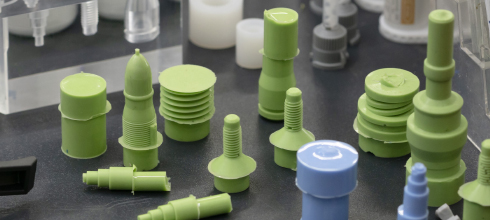
ByMartin Supply •
The Challenges of Plastic Injection Molding
by Benz Oil
One of the most vital operations in modern manufacturing is plastic injection molding. Though it is nearly as old as other manufacturing operations that were born during the industrial revolution, plastic injection molding exploded during WWII, when metals and other materials were needed for the war effort, leaving plastics and polymers the natural substitute.
Today, the global injection molded plastics market is valued at nearly $260 billion and is expected to grow at a compound annual growth rate of 5%.
One only has to look at his desktop, car interior, or laptop to appreciate how plastics have taken over nearly every facet of the material world. The dependence on forming and molding plastics has made manufacturers likewise dependent on fluids to aid the release of these plastics from sticky molds.
Sounds Simple, But…
The hydraulic systems that perform molding operations are intricately designed to handle high heat from quick cycle times and hydraulic movement. But the high heat causes hydraulic fluid to degrade into a gummy mess that clogs machines, corrodes tooling, and generally ruin the plant manager’s day!
Varnish Can Be Costly
A common problem is the formation of varnish. Varnish has historically been used as a catchall term for oxidized oil deposits but includes the hard residue that cannot be easily removed from mechanical components by wiping away. Varnish can be the enemy of plastic injection molding operations. Sticky varnish deposits increase friction, cause valve failure, reduce machine efficiency, and lead to mechanical failure. Increased temperatures accelerate oil oxidation, but it is difficult to predict when the adverse consequences will compromise machine operations. While the presence of oxidation can be linked to varnish formation, Benz research has shown that some fluids varnish heavily with very little oxidation, while other fluids may be heavily oxidized but produce little or no varnish.
Reduce Downtime, Cycle Time, & Oil Usage
Choosing the correct hydraulic fluid is crucial to reduce downtime, equipment failure, and cycle time. By degrading oils in a precise and predictive environment, the Benz technology team has learned how to modify hydraulic oil chemistry to minimize varnish formation as measured by Membrane Patch Colorimetry (MPC).
A Solution
The Benz ECLIPSE VR series is the result of years of research and testing that has produced solutions that reduce downtime, equipment time, cycle time, and hydraulic usage. ECLIPSE VR was tested at two customer locations for over 12 months. Customer A had an annual cost savings of $160,000 through speed optimization and reduced oil usage. Customer B had an annual cost savings of $60,000 through reduced valve repair, labor costs and reduced production time. Both showed very low varnish potential levels via MPC testing. These customers were pleased with the results that were obtained during the testing period – no varnish occurred in their machines. ECLIPSE VR enables a proactive maintenance philosophy to contribute to the most efficient of manufacturing parts.
Eliminate varnish from your plastic injection molding today with Benz ECLIPSE VR. Contact your Martin Sales Rep or call 800.828.8116.

Comments for this post are closed.